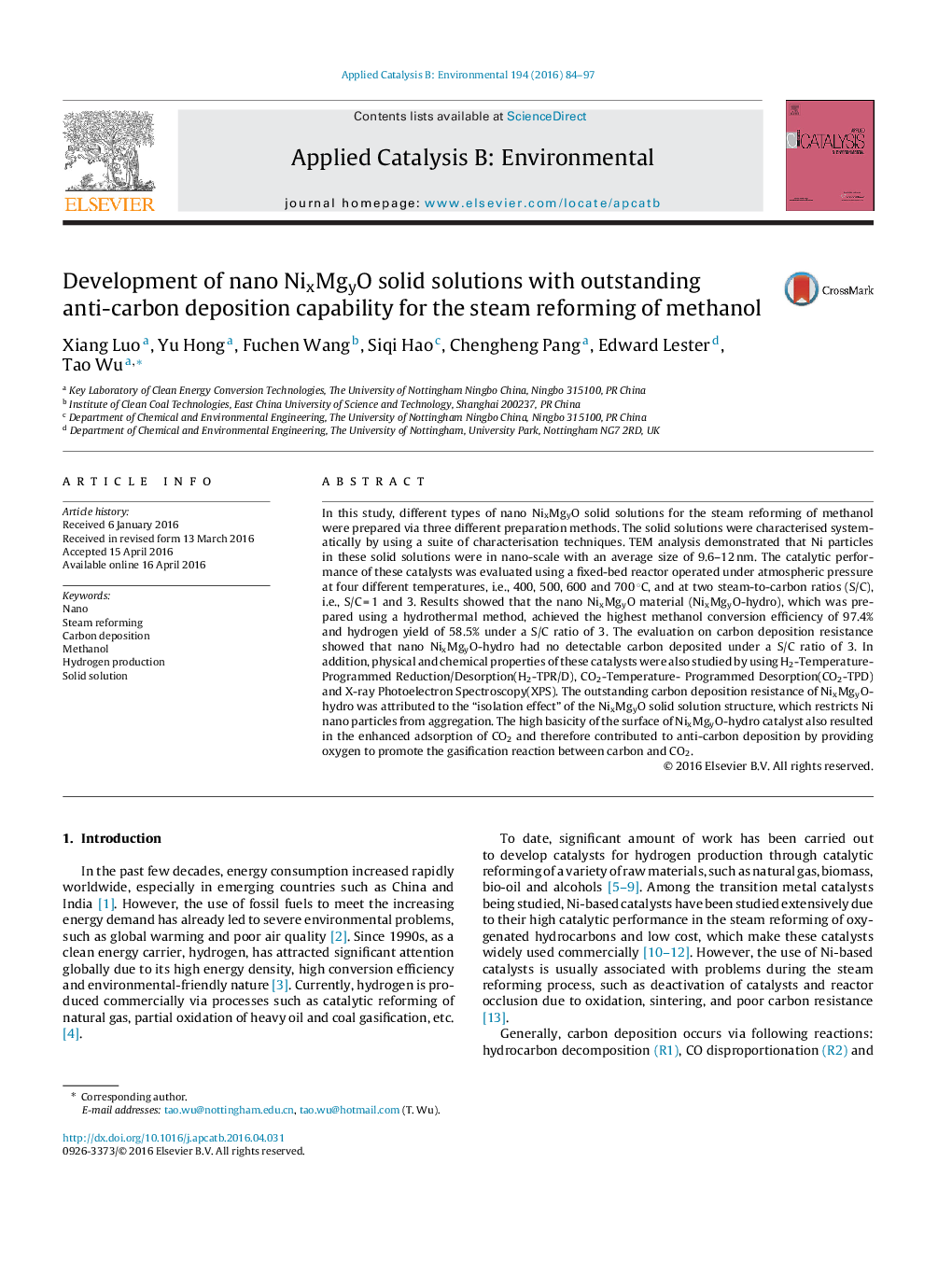| Article ID | Journal | Published Year | Pages | File Type |
|---|---|---|---|---|
| 44789 | Applied Catalysis B: Environmental | 2016 | 14 Pages |
•Nano NixMgyO solid solution for hydrogen production via steam reforming was synthesised using three different methods.•The carbon species deposited on different catalysts were characterised.•NixMgyO solid solutions promoted CO2 adsorption and led to significantly enhanced anti-carbon deposition property.•Hydrothermally prepared NixMgyO solid solution showed excellent durability and a high conversion of 97.4% after 20 h testing.
In this study, different types of nano NixMgyO solid solutions for the steam reforming of methanol were prepared via three different preparation methods. The solid solutions were characterised systematically by using a suite of characterisation techniques. TEM analysis demonstrated that Ni particles in these solid solutions were in nano-scale with an average size of 9.6–12 nm. The catalytic performance of these catalysts was evaluated using a fixed-bed reactor operated under atmospheric pressure at four different temperatures, i.e., 400, 500, 600 and 700 °C, and at two steam-to-carbon ratios (S/C), i.e., S/C = 1 and 3. Results showed that the nano NixMgyO material (NixMgyO-hydro), which was prepared using a hydrothermal method, achieved the highest methanol conversion efficiency of 97.4% and hydrogen yield of 58.5% under a S/C ratio of 3. The evaluation on carbon deposition resistance showed that nano NixMgyO-hydro had no detectable carbon deposited under a S/C ratio of 3. In addition, physical and chemical properties of these catalysts were also studied by using H2-Temperature-Programmed Reduction/Desorption(H2-TPR/D), CO2-Temperature- Programmed Desorption(CO2-TPD) and X-ray Photoelectron Spectroscopy(XPS). The outstanding carbon deposition resistance of NixMgyO-hydro was attributed to the “isolation effect” of the NixMgyO solid solution structure, which restricts Ni nano particles from aggregation. The high basicity of the surface of NixMgyO-hydro catalyst also resulted in the enhanced adsorption of CO2 and therefore contributed to anti-carbon deposition by providing oxygen to promote the gasification reaction between carbon and CO2.
Graphical abstractFigure optionsDownload full-size imageDownload as PowerPoint slide
